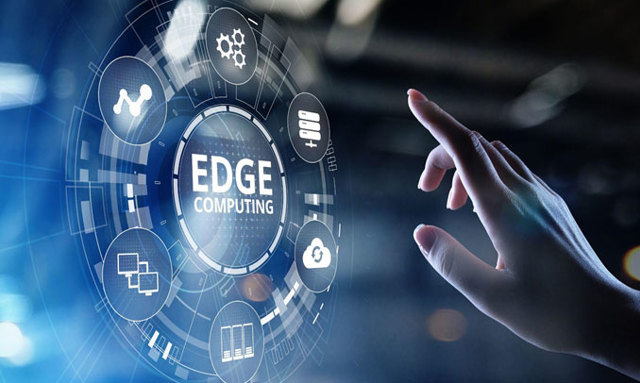The Future Role of Data Centers
Fast forward to the future, and data centers are poised to undergo even more profound changes. Here are some key aspects of their future role:


To understand the future of data centers, we must first examine their present state, as data centers have been undergoing several key transformations in recent years:
Data centers were growing at an unprecedented rate. With the rise of cloud computing, edge computing, and the Internet of Things (IoT), the demand for data storage and processing was skyrocketing. Large hyperscale data centers from companies like Amazon, Google, and Microsoft were expanding globally to meet this demand.
Energy consumption was a pressing concern. Data centers are known for their voracious appetite for power, contributing significantly to carbon emissions. To address this, there was a growing emphasis on improving energy efficiency through advanced cooling techniques, server optimization and renewable energy adoption.
Edge computing was gaining traction. As data processing requirements became more immediate (e.g., autonomous vehicles, real-time analytics), edge data centers were being deployed closer to the data source, reducing latency and enabling faster response times.
Data center operators were grappling with increasingly sophisticated cyber threats. Security measures and compliance standards were continuously evolving to protect sensitive data and maintain data integrity.
Sustainability was becoming a central theme. Companies were striving to make their data centers greener by investing in renewable energy sources, adopting more efficient cooling technologies as well as prolonging the life cycle of the data center equipment like servers, storage and networking
Fast forward to the future, and data centers are poised to undergo even more profound changes. Here are some key aspects of their future role:

Edge data centers will play an even more critical role in the future. As IoT devices become ubiquitous, autonomous vehicles become mainstream, and real-time applications proliferate, edge data centers will handle a substantial portion of data processing. This shift will reduce latency and enhance the user experience for applications that demand immediate responses.
The rollout of 5G networks will further integrate data centers into the fabric of our daily lives. The high bandwidth and low latency of 5G will enable new applications and services, such as augmented reality, virtual reality, and remote surgeries, all of which will rely on data centers to deliver seamless experiences.
Artificial intelligence and machine learning will be at the heart of data center operations. These technologies will optimize resource allocation, predict and prevent downtime, and enhance security through advanced threat detection algorithms. Data centers will not only host AI models but will also become intelligent entities themselves.
Quantum computing, still in its infancy, holds tremendous promise for data centers. These ultra-powerful machines will revolutionize data processing capabilities, enabling complex simulations, cryptography, and problem-solving at an unprecedented scale. Data centers will need to adapt to accommodate the unique infrastructure requirements of quantum computers.
Data centers will also facilitate human-machine collaboration. Advanced robotics, automation, and augmented reality will be used for data center maintenance and operations. Human technicians will work alongside robots to ensure optimal performance and efficiency.
As data continues to grow in importance, data center security will become even more critical. Robust encryption, multi-factor authentication, and advanced threat detection will be standard practices. Additionally, data centers will need to comply with increasingly stringent data privacy regulations worldwide.
The future of data centers will be hybrid and multi-cloud. Businesses will rely on a combination of on-premises data centers, public cloud services, and private clouds to meet their diverse computing needs. Data center operators will facilitate seamless integration between these environments.
Sustainability will remain a top priority. Data centers will continue to invest in renewable energy sources, advanced cooling systems, and innovative construction materials to reduce their environmental impact. Additionally, techniques like waste heat utilization will become more prevalent, further enhancing their eco-friendliness.
Third party maintenance (TPM) is another step to reducing CO2 emissions in data centers. As original equipment manufacturers (OEMs) offer warranty support sometimes only up to three years, this support can be extended through third party maintenance providers. TPM can help you prolong the use of data center hardware when it is at the end of service life (EOSL). Data center hardware can function effectively up to 10 and in some cases even 15 years; therefore, buying new equipment when the existing one is at the EOSL has unnecessary environmental (and financial) costs.

The future of data centers is one of both challenge and opportunity. As our digital world continues to expand and evolve, these facilities will play a central role in enabling the technologies and applications that define our future. From edge computing to quantum computing, from sustainability to security, data centers will be at the forefront of innovation and progress.
However, data centers must also address the environmental concerns associated with their operations, such as energy consumption and data privacy. Striking the right balance between innovation and responsibility will be crucial in ensuring that data centers continue to serve as crucial and yet responsible factor of the digital age.
As we look ahead, the future role of data centers is one that will shape the world we live in, contributing to a more connected, intelligent, and sustainable future for all.
If you have further questions - especially about sustainability within the data center sector or Third Party Maintenance, do not hesitate to e-mail us at sales@nordiccomputer.com, or contact us by filling out the form below.